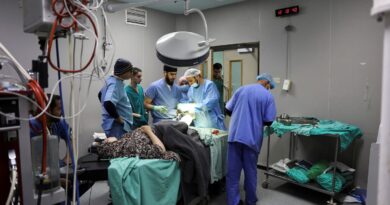U.S. destroys the last of its chemical weapons stockpile
At its peak, the U.S. chemical weapons stockpile measured about 30,000 metric tons.
Congress directed the weapons’ eradication in 1986. The Chemical Weapons Convention of 1997, which the United States joined with 192 countries to forbid their creation and stockpiling, required complete elimination by Sept. 30. Since then, 3.5 million munitions were dismantled along with thousands of containers used to store their agents, U.S. officials have said.
It has taken more than a decade to destroy the last 10 percent, the Pentagon said. And while the United States was the last participating country to have finished culling its chemical weapons stocks, officials pointed to a congressional requirement to develop a safe and environmentally conscious alternative to incineration as one factor responsible for drawing out the process.
“Destroying the remainder posed a greater challenge because it involved the more complicated approach of neutralizing these munitions’ chemicals,” Douglas Bush, an Army assistant secretary, told reporters Monday.
The United States also helped other nations — including Russia, Libya and Albania — destroy their stockpiles, officials said.
Though China and Russia are signatories of the pledge to end their chemical weapons programs and eliminate their stocks, U.S. officials said they have concerns about whether they have followed through.
“We have questions about some of the destruction of China’s stockpile,” Mallory Stewart, the assistant secretary of state for arms control, verification and compliance. “We also have concerns, specifically, with respect to the undeclared chemical weapons that Russia is maintaining,” pointing to Kremlin-linked attacks on a spy and a dissident.
Syrian troops launched a chlorine gas attack as recently as 2018, killing 43 civilians, a chemical weapons watchdog concluded in January. It’s one of hundreds of chemical weapons attacks linked to the government of Bashar al-Assad.
Nearly 100,000 people were killed by chemical weapons in World War I, according to the United Nations. Since then, the weapons have been responsible for at least 1 million casualties worldwide, the U.N. says.
The elimination process has been arduous, officials said. The munitions contain explosives and chemical agents, and each can become unstable over time.
Legislation required the Defense Department to determine ways to destroy the weapons and agents without burning them, which lawmakers and advocates feared could pose environmental hazards and have adverse health effects on people living near the facilities where the work was completed.
“These weapons were not designed to be taken apart,” Kingston Reif, the deputy assistant secretary of defense for threat reduction and arms control, told reporters Monday. “They had to be painstakingly disassembled in reverse.”
The work was done at two facilities, the Blue Grass Army Depot in Kentucky and U.S. Army Pueblo Chemical Depot in Colorado. Robots were used to reduce risk to workers.
In Colorado, mustard agents were drained from shells, diluted in hot water and other elements, and then introduced to microbes that broke them down further, said Michael Abaie, who oversaw the disposal program. The process is akin to using bacteria in septic system, he said.
At the Kentucky depot, nerve agents were mixed with hot water and caustic soda to reduce their toxicity before being shipped to another facility for incineration, Abaie said.
Some weapons, mostly older mustard rounds, had solidified and couldn’t be drained. They were inserted into a detonation chamber, where the material was heated, rendering gas safe enough to be purified and released, according to Abaie and an Army webpage detailing the process.
Over the next three to four years, the sites will undergo decontamination before being decommissioned and demolished, officials said.
“While the [weapons’] destruction is complete,”Abaie said, “we still have much more work to do.”




